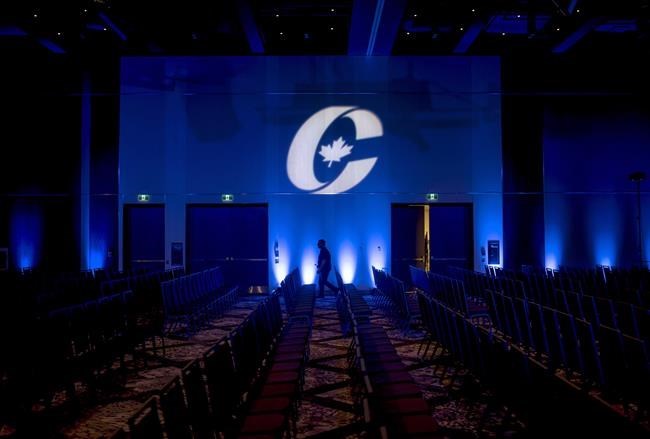OTTAWA — The federal Conservative party said Tuesday it has 269,469 members eligible to vote in the current leadership race.
But the number that actually matters when it comes to who will win the leadership later this summer is 16,901.
The Conservatives use a points system to elect a leader, and so who wins is less about how many members candidates have in their corners and more about where those members live.
Each riding in the country is allocated 100 points, and how many points a candidate receives is based on his or her share of the votes in that riding.
To win, a candidate must win the majority of the 33,800 available points, or 16,901.
The party said Tuesday that there are now more than 100 ridings across Canada that have more than 1,000 party members.
Party officials didn't release a riding-by-riding breakdown, but said nine of the 10 ridings with the most members are in Alberta, which is the party's traditional stronghold.
The ridings that have seen the largest percentage growth are in non-traditional strongholds, including the riding of Papineau, the Montreal constituency held by Prime Minister Justin Trudeau.
Candidates ought to be applauded for working hard during the COVID-19 pandemic to sign up new members to vote, said Lisa Raitt, the former Conservative cabinet minister who is the co-chair of the leadership organizing committee.
"These are Canadians that are motivated and want a say in who the next prime minister is," she said in a statement.
About 100,000 memberships have been purchased since the start of the year, when the contest to replace current leader Andrew Scheer officially began.
Voting is now underway by mail and a winner is to be announced in late August.
When Scheer won the leadership in 2017, the party had 259,000 members but only 141,000 cast ballots.
He won in the 13th round of voting, with 50.95 per cent of the available points, beating out Maxime Bernier, who had 49.05 per cent.
The party said Tuesday that the largest percentage of membership growth since the start of the year came in Nova Scotia, Newfoundland and Labrador, Alberta and Quebec.
In 2017, just 6.3 per cent of the party's members were in Quebec. With 78 ridings there, relatively few members can wield considerable influence.
Leadership candidate Peter MacKay has been campaigning in rural Quebec in particular in the last few days, part of a get-out-the-vote effort by his campaign ahead of the deadline to return ballots.
The other three contenders, Erin O'Toole, Derek Sloan and Leslyn Lewis, are also spooling up their efforts, not just ensuring their own supporters get out to vote but seeking votes from each other's backers as well.
The party uses a ranked ballot, meaning members can rank their preferences in order from one to four.
The ballots are then counted in rounds. If in the first round no candidate gets a majority of points, the person with the fewest points is removed from the ballot.
Those who voted for that person will have their ballots counted again, with their second choices getting their redistributed votes. The process continues until a winner is selected.
In 2017, Scheer had 62,593 votes on the final ballot and Bernier had 55,544.
The remaining 23,000 voters hadn't ranked either of the two out of the 14 names that were on the ballot that year.
This report by The Canadian Press was first published July 14, 2020.
Stephanie Levitz, The Canadian Press



